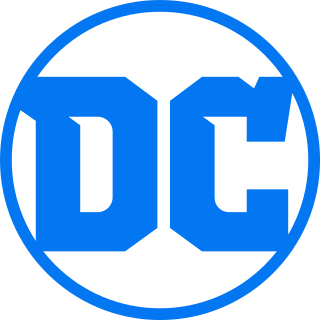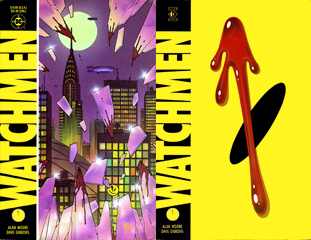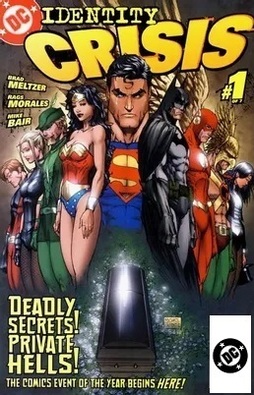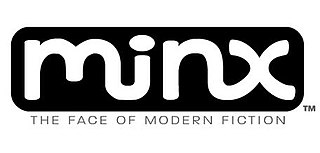
A comic book, also called comicbook, comic magazine or simply comic, is a publication that consists of comics art in the form of sequential juxtaposed panels that represent individual scenes. Panels are often accompanied by descriptive prose and written narrative, usually, dialogue contained in word balloons emblematic of the comics art form.

DC Comics, Inc. is an American comic book publisher and the flagship unit of DC Entertainment, a subsidiary of Warner Bros. Discovery.

The Modern Age of Comic Books is a period in the history of American superhero comic books which began in the mid-1980s and continues through the present day. During approximately the first 15 years of this period, many comic book characters were redesigned, creators gained prominence in the industry, independent comics flourished, and larger publishing houses became more commercialized.

Identity Crisis is a seven-issue comic book limited series published by DC Comics from June to December in 2004. It was created by writer Brad Meltzer and the artistic team of penciler Rags Morales and inker Michael Bair.
In comics in the United States, a trade paperback is a collection of stories originally published in comic books, reprinted in book format, usually presenting either a complete miniseries, a story arc from a single title, or a series of stories with an arc or common theme.
Gurihiru, also credited as Illustrator Unit Gurihiru and Gurihiru Studios, is a Japanese illustration team, consisting of Chifuyu Sasaki and Naoko Kawano. Both originating from Sapporo, Japan, they are currently based in Saitama, mainly working as artists for American comics.

DC: The New Frontier is an Eisner, Harvey, and Shuster Award-winning six-issue comic book limited series written and drawn by Darwyn Cooke, and published by DC Comics in 2004. The series was collected into two trade paperback volumes in 2004 and 2005, an Absolute Edition in 2006 and a deluxe edition in 2015. The story was adapted into an animated film, Justice League: The New Frontier, which was released on February 26, 2008.
Notable events of 2006 in comics.

First Second Books is an American publisher of graphic novels. An imprint of Roaring Brook Press, part of Holtzbrinck Publishers, First Second publishes fiction, biographies, personal memoirs, history, visual essays, and comics journalism. It also publishes graphic non-fiction for young readers, including the Science Comics and History Comics collections, and for adults, including the World Citizen Comics, a line of civics graphic books, and biographical works such as The Accidental Czar.
In comics, an ongoing series is a series that runs indefinitely. This is in contrast to limited series, a one shot, a graphic novel, or a trade paperback. However, a series of graphic novels may be considered ongoing as well. The term may also informally refer to a current or incomplete limited series with a predetermined number of issues.

Lark Pien is an American cartoonist who has created the minicomics Stories from the Ward, Mr. Boombha, and Long Tail Kitty, the last of which won her the Friends of Lulu Kimberly Yale Award for Best New Talent in 2004.

Sonny Liew is a Malaysia-born comic artist/illustrator based in Singapore. He is best known for The Art of Charlie Chan Hock Chye (2015), the first graphic novel to win the Singapore Literature Prize for fiction.

Gene Luen Yang is an American cartoonist. He is a frequent lecturer on the subjects of graphic novels and comics, at comic book conventions and universities, schools, and libraries. In addition, he was the Director of Information Services and taught computer science at Bishop O'Dowd High School in Oakland, California. In 2012, Yang joined the faculty at Hamline University as a part of the Low-Residency Master of Fine Arts in Writing for Children and Young Adults (MFAC) program. In 2016, the U.S. Library of Congress named him Ambassador for Young People's Literature. That year he became the third graphic novelist, alongside Lauren Redniss, to receive a MacArthur Fellowship.

Minx was an imprint of DC Comics that published graphic novels aimed at teenage girls. It ran from 2007 to 2008.

The Avatar: The Last Airbender comics are an official continuation of the original Nickelodeon animated television series, Avatar: The Last Airbender, created by Michael Dante DiMartino and Bryan Konietzko. The series includes The Lost Adventures, published from 2005 to 2011 and set between episodes of the original series, and the graphic novel trilogies, published since 2012 and set a few years after the original series. A related comic continuation, taking place seven decades later, The Legend of Korra, began publication in 2017.

The Green Turtle is a superhero originally published by Rural Home Publications. He first appeared in Blazing Comics (1944), and was created by Chinese-American cartoonist Chu F. Hing. While the original run of the character lasted only five issues, the Green Turtle is notable for three factors. First, during WWII, the stories represented the Chinese in U.S. popular media as heroic partners fighting the Axis. One issue begins with the banner 美國及中華民國, and features a U.S. general joining Chinese guerrillas in battle. During the war, U.S. depictions of the Pacific theatre were typically racialized; the "Yellow Peril" stereotypes applied to the Japanese were originally anti-Chinese and portrayed Asians as racial enemies of Western civilization. Second, the character is often identified as the first Asian-American comic book hero. These factors inspired a contemporary graphic novel on the Green Turtle, Shadow Hero, by Gene Luen Yang, whose American Born Chinese was the first work in a comics format to be nominated for the National Book Award.
DC Graphic Novels for Young Adults, formerly known as DC Ink, is an imprint of American comic book publisher DC Comics consisting of original one-shots, graphic novels and reprints of books previously published under other imprints. The imprint intends to present traditional DC Universe characters for young adult readers. The first title of the DC Ink imprint, Mera: Tidebreaker, was published on February 2, 2019 and Batman: Nightwalker was the last title to be published under DC Ink. Wonder Woman: Warbringer, the first title of DC Graphic Novels for Young Adults, was published on January 10, 2020.

Viktor Bogdanovic is a comic book artist best known for his work on DC and Marvel superheroes.

DC Graphic Novels for Kids, formerly known as DC Zoom, is an imprint of American comic book publisher DC Comics consisting of original one-shots and reprints of books previously published under other imprints. The imprint intends to present traditional DC Universe characters for middle-grade readers. The first title of the DC Zoom imprint, DC Super Hero Girls: Search for Atlantis was published on September 26, 2018. Black Canary: Ignite and Super Sons Book Two: The Foxglove Mission were the last titles to be published under DC Ink. Diana: Princess of the Amazons, the first title of DC Graphic Novels for Kids, was published on January 7, 2020. The first reprint, DC Super Hero Girls: Weird Science was published on July 14, 2020.

X-Men: Trial of Magneto is a comic book storyline, which debuted in August 2021, published by Marvel Comics. The limited series spin out of the murder of Scarlet Witch during the Hellfire Gala.















